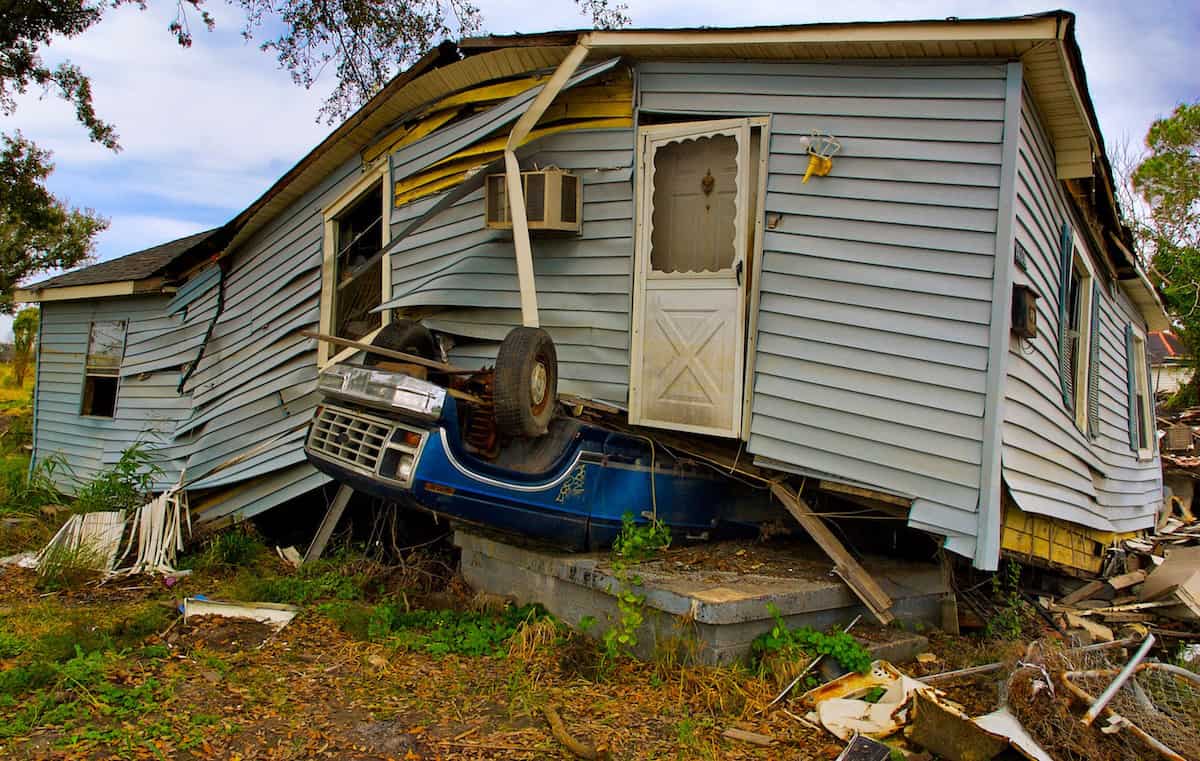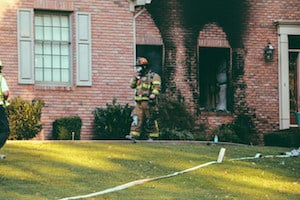
20 Feb Mastering Disaster Restoration in Tulsa
When disaster strikes in Tulsa, being prepared can make all the difference in how swiftly and effectively you can recover. From the relentless winds of tornadoes to the unexpected damage caused by floods, each type of calamity brings its unique set of challenges. But fear not, understanding these disasters, familiarizing with the restoration processes, and knowing how to choose the right professionals for the job can significantly mitigate the impacts. This guide aims to arm you with essential knowledge on mastering disaster restoration in Tulsa and navigating through the aftermath of disasters, ensuring you’re well-equipped to restore normalcy with confidence.
Understanding Disaster Types and Their Impacts
Understanding Common Disasters in Tulsa: Identifying Risks to Properties
Tulsa, a city known for its dynamic weather and geographic location, faces several disaster risks that could significantly impact properties. By understanding these hazards, property owners can better prepare and mitigate potential damage.
Tornadoes:
Tornadoes are the most notorious disaster threat in Tulsa, given its position in “Tornado Alley.” These violent windstorms can cause extensive damage to buildings, uproot trees, and hurl debris at high speeds, endangering lives and properties. Tornadoes can strike unexpectedly, especially during spring and early summer.
Floods:
Tulsa is also prone to flooding, primarily due to its numerous water bodies and variable rainfall patterns. Floods can inundate homes, erode foundations, and lead to mold and water damage. Low-lying areas and properties near rivers or creeks are particularly at risk.

Severe Storms:
Beyond tornadoes, Tulsa experiences severe thunderstorms that bring heavy rain, hail, and strong winds. These conditions can break windows, damage roofs, and down power lines, posing a risk to the safety of residents and the structural integrity of buildings.
Ice Storms:
During the winter months, Tulsa can be hit by ice storms that coat everything in a layer of ice. This weight can cause trees to fall on homes and power lines, leading to power outages and property damage. Additionally, slippery conditions increase the risk of accidents on and around the property.
Wildfires:
While less common, the areas surrounding Tulsa are susceptible to wildfires during dry, hot periods. Wildfires can spread quickly, destroying homes, scorching landscapes, and compromising air quality.
Mitigating the Impact on Properties
To minimize damage from these disasters, property owners in Tulsa must take proactive measures. Installing robust storm windows, securing loose objects outdoors, ensuring proper drainage, and maintaining the structural integrity of buildings are essential steps. Furthermore, staying informed about local emergency plans and considering insurance options that cover these specific disaster risks can provide financial protection against the unforeseeable nature of such events.
By acknowledging and preparing for these common disasters in Tulsa, property owners can better safeguard their homes and communities against the potential impacts on their properties.
Mastering Disaster Restoration In Tulsa: Process and Techniques
Assessing and Approaching the Restoration of Disaster-Damaged Property in Tulsa
Post-disaster, Tulsa property owners face the daunting task of restoring their homes and businesses. Here’s a methodical approach to assess damage and commence restoration efficiently, aimed at ensuring safety and minimizing further damage.
Step 1 in mastering disaster restoration in Tulsa: Safety First
Prioritize your safety and that of others. Don’t re-enter the property until authorities declare it safe, considering the risks of structural damage, gas leaks, and electrical hazards. Wear protective clothing—gloves, sturdy boots, and a respirator if needed—to protect against sharp objects and potentially harmful substances.
Step 2: Documentation
Before moving anything, document all damage. Take clear photos or videos to capture the extent of destruction for insurance purposes. This step is crucial for filing accurate claims. Ensure every affected area and item is recorded.
Step 3: Contact Insurance
Notification of disaster-stricken properties must be swift. Reach out to your insurance provider immediately to report the damage. They’ll guide you through the claim process and may dispatch an adjuster to your site. Be prepared to provide the documentation collected in Step 2.
Step 4: Secure the Property
To prevent additional damage or loss, secure your property. This may involve covering broken windows with plywood, tarping damaged roofs, or erecting temporary fencing. Such actions also help deter vandalism and theft.
Step 5: Mold and Moisture Control
After water-related disasters, acting quickly to dry out the property is vital. Mold can develop within 24 to 48 hours of water exposure. Employ dehumidifiers and fans, and remove wet items, including carpeting and furniture, to accelerate drying.
Step 6: Salvage and Remove Debris
Determine what can be saved and what must be discarded. Non-salvageable items should be carefully removed from the property to clear the way for repair work. Hazardous materials like asbestos or lead-based paints require professional handling; do not attempt to remove these yourself.
Step 7: Contract Professional Services
Significant structural damage, electrical issues, or plumbing problems necessitate expert intervention. Hiring experienced professionals ensures repairs meet local building codes and standards. Obtain multiple estimates to ensure you’re getting the best service at a fair price.
Step 8: Rebuilding and Renovation
Once the immediate concerns are addressed, the focus shifts to rebuilding. This stage offers an opportunity to consider future disaster mitigation measures. Perhaps elevate electrical systems, reinforce structures, or use more resilient materials.
Step 9: Support Network
Remember, you’re not alone. Local community groups, disaster relief organizations, and governmental agencies offer assistance ranging from financial aid to mental health support. Leverage these resources to aid in your recovery journey.
Restoration post-disaster is undoubtedly challenging, but a methodical and informed approach can significantly ease the process. Ensuring safety, meticulous documentation, and professional assistance are pillars to efficiently restoring your property, paving the way to recovery and resilience in Tulsa’s dynamic weather landscape.

Choosing a Professional Restoration Service
Selecting a Professional Disaster Restoration Service in Tulsa: Key Considerations
When disaster strikes Tulsa, it’s crucial to promptly pick a professional restoration service that helps return your life and property back to normal. Here’s a guide on what criteria to consider during your selection process.
Experience and Expertise:
A company specializing in disaster restoration should have a solid track record. Look for services with extensive experience in dealing with the aftermath of the particular disasters Tulsa faces, like tornadoes and floods. They should have a team of experts trained in all aspects of disaster recovery.
Licensing and Certification:
Ensure the company is licensed to operate in Tulsa and carries certifications from recognized industry organizations, such as the Institute of Inspection, Cleaning, and Restoration Certification (IICRC). These certifications indicate they meet specific standards and follow best practices.
Response Time:
Time is of the essence. The right service should offer 24/7 emergency response and be able to act quickly to mitigate damage. Assess their response time commitment; a service that promises to be on-site within a few hours can prevent further damage.
Equipment and Techniques:
A capable restoration service employs the latest equipment and techniques. Inquire about their tools and methods for drying, dehumidifying, mold remediation, and other services. Advanced technology plays a crucial role in efficient and effective recovery.
References and Reviews:
Ask for references and check online reviews. Hearing from other Tulsa residents who have used their services can provide insight into their reliability and quality of work.
Insurance Coordination:
Dealing with insurance claims can be daunting. The best disaster restoration services will have experience working with insurance companies and can help guide you through the claims process, making it smoother and less stressful.
Comprehensive Services:
Look for a company that offers a wide range of services, from water damage restoration to fire and smoke recovery, mold remediation, and even reconstruction services. This ensures that all aspects of your disaster recovery are handled by the same team, providing a cohesive approach to your project.
In conclusion, taking these considerations into account will guide you in selecting a professional who has experience mastering disaster restoration in Tulsa. A company that is reliable, efficient, and capable of restoring your property to its pre-disaster state. Remember, the right partner in disaster recovery is indispensable for a swift and effective restoration process.
Armed with a solid understanding of different disaster types, restoration techniques, and how to select the finest professional help in Tulsa, you’re now in a stronger position of mastering disaster restoration in Tulsa that comes your way. Remember, knowledge is your first line of defense in disaster recovery. Making informed decisions will not only help in effective restoration but also in preventing future losses. Keep this guide handy, and you’ll be well on your way to overcoming the trials posed by natural and man-made disasters, rebuilding stronger and smarter.


Sorry, the comment form is closed at this time.